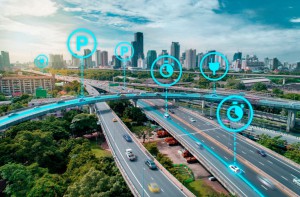Smart cities, in theory, can be an ecosystem of technologies that use data and analytics to manage assets and resources more efficiently with user-specific applications that could enhance public safety.
Some advancements in this sector are already playing a huge role in the safety of operations in the United Kingdom, Germany and Belgium, according to the online journal IT ProPortal.
From roadways, streets and intersections, to buildings, critical infrastructure and public spaces, smart sensing solutions are becoming an essential part of the technology needed to improve the safety of public operations, the article noted.
(Cities will play a larger role in the future of mobility.)
The systems can allow us to visualize a future connected city based on situational awareness and data driven operations – but how can we tap into the technology and infrastructure.
The IT ProPortal journal said thermal imaging technology tracks heat movement, in any situation or condition, and extends the visibility of traditional cameras by up to four-times.
By connecting cities through the implementation of intelligent transportation solutions – like smart thermal and visible imaging systems that monitor traffic flow and detect incidents – cities can better inform road users of hazards, delays and alternate routes to keep everyone moving, it said.
Hamburg, one of the most congested cities in Germany, has developed reputation as the most innovative smart cities in the country, IT ProPortal said.
With 113 hours a year being wasted to traffic jams, city authorities are installing thermal imaging technology to traffic and street lights by 2021 which will allow authorities to “see” data-points. The cameras are interconnected via a cloud-based system which allows for high-resolution and real-time information to be collected and analyzed, resulting in fully comprehensive datasets from 420 intersections across Hamburg.
Traffic controllers can differentiate between pedestrians, vehicle types and cyclists allowing them to accurately count and process how busy the roads are, enabling them to adjust signals in real-time.
(Ford Begins Testing Autonomous Vehicles in Detroit.)
The cloud-based system allows for the seamless transfer of information across the city, meaning that controllers can improve long-term planning and reduce bottlenecks, so traffic flow is adapted to minimize daily congestion.
In another example, IT ProPortal said Durham in the United Kingdom, city authorities recently deployed FLIR’s thermal imaging sensors onto pre-existing road signs to build a collision avoidance system that reduced the number of collisions at the junction to zero. Putting electronic road signs that spur signalization into action, upon the detection of a passing object, has helped prevent crashes and save lives.
Over time this can change driver behavior through early-warning systems that prevent heavy braking, allow drivers to adapt their speed accordingly and drive more economically, the journal said.
Having this data to hand enables city authorities to analyze the information and utilize this to optimize infrastructure performance and make roads safer. By getting ahead of rush hour on busy arterials to posting travel-times on variable messaging boards, across the city, technology is enabling urban planners and dwellers to make smarter, safer transport decisions.
The dynamics and scalability of cloud platforms enables these solutions to be tailored to address specific needs and operate seamlessly within any city-level operation, management platform, and associated interface, IT ProPortal said.
Through one central node of communication, control centers are granted a unified access point with global displays and AI driven-data processing, allowing for a faster, more unified response across the city — and regardless of the scenario.
By connecting cities through intelligent transportation solutions – like FLIR’s smart thermal and visible imaging systems that monitor traffic flow and detect incidents – drivers can avoid hazards, delays and use alternate routes to keep people moving.
(Ride-hailing services don’t cut traffic, they add to it, study says.)
The concept of smart cities, and their possibilities, are constantly changing while their purpose remains focused on public safety. Communities are empowered by having greater capacity to shape and customize user-specific applications to meet their needs, while the vision of a fully connected city through innovation has exceeded what the current infrastructure can provide.


The state of ‘timed’ traffic lights is depressing. Sometimes the simplest light sequences are mis-synchronized to guarantee getting stopped. I think a sharp high school student could do a better job than the traffic managers we have.
Fewer cars and trucks equal less traffic. Population concentration is the culprit?